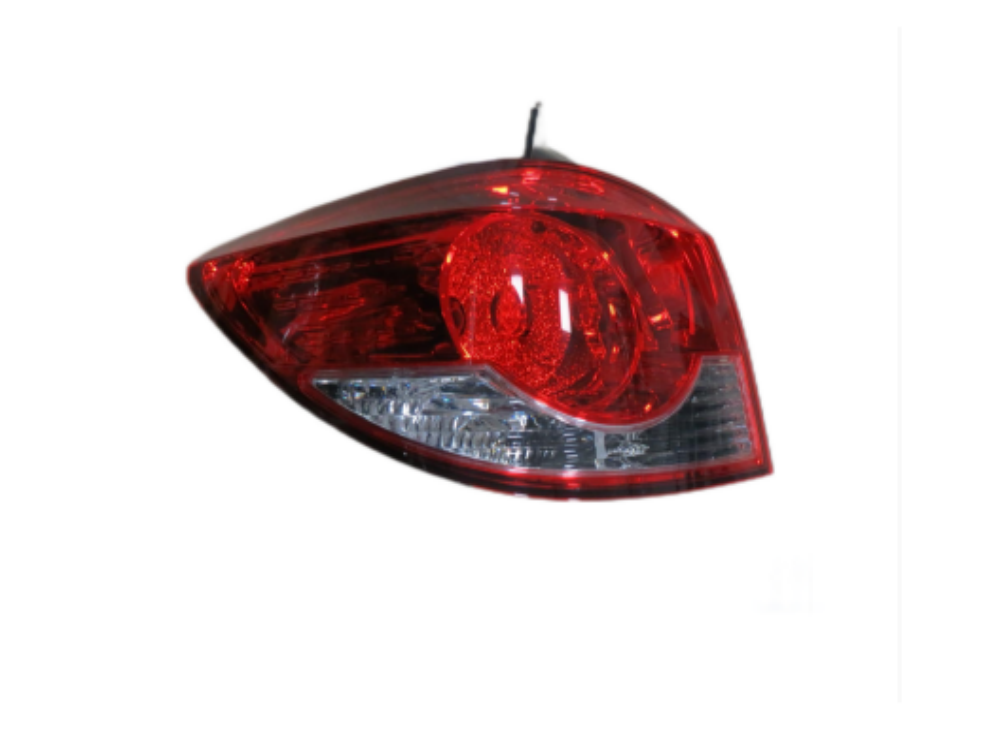Inzicht in de cruciale rol van automobielcarrosseriebescherming
Een auto Vleugel vormt één van de meest essentiële onderdelen in het moderne voertuigontwerp, waarbij cruciale veiligheidskenmerken worden gecombineerd met esthetische uitstraling. Deze zorgvuldig ontworpen carrosseriedelen beschermen vitale onderdelen van het voertuig terwijl ze bijdragen aan de algehele visuele uitstraling van auto's. Naarmate het automobielontwerp blijft evolueren, zijn spatborden steeds geavanceerder geworden in zowel vorm als functie.
Van klassieke auto's tot moderne voertuigen heeft de spatbord een significante transformatie ondergaan, maar zijn fundamentele functie is onveranderd gebleven. Deze onderdelen beschermen de wielkasten, voorkomen dat puin wordt weggeslingerd en absorberen impactenergie bij botsingen. Inzicht in hun belang helpt automobilisten de waarde te begrijpen van het onderhouden van deze essentiële autocomponenten.
De Evolutie van Autobeveiligingssystemen
Historische Ontwikkeling van Autospatborden
De geschiedenis van autospatborden begint in de vroege dagen van de automobielgeschiedenis, toen voertuigen voor het eerst beschermd moesten worden tegen modder en puin dat werd opgesmeten door draaiende wielen. Vroege spatborden waren eenvoudige, losse metalen platen die aan het chassis van het voertuig werden bevestigd. Naarmate de autotechniek vorderde, ontwikkelden deze basisbeschermende elementen zich tot de geïntegreerde carrosseriedelen die we tegenwoordig zien.
Door de jaren heen hebben fabrikanten de ontwerpen van auto spatborden verfijnd om te voldoen aan veranderende veiligheidsnormen en esthetische voorkeuren. De overgang van afzonderlijke onderdelen naar geïntegreerde carrosseriestructuren heeft zowel de voertuigbescherming als het visuele aanzien revolutionair veranderd, waardoor moderne spatborden een integraal onderdeel zijn geworden van de algehele designtaal van het voertuig.
Moderne technologische innovaties
Tegenwoordig worden bij auto spatborden geavanceerde materialen en ingenieursprincipes gebruikt om hun beschermende functie te verbeteren. Hogesterkte staal, aluminiumlegeringen en composietmaterialen zorgen voor een lager gewicht terwijl de structurele integriteit behouden blijft. Deze innovaties dragen bij aan een betere brandstofefficiëntie zonder in te boeten op veiligheid.
Ingenieurs gebruiken momenteel geavanceerde computermodellen om auto spatborden te ontwerpen die de aerodynamica en de schokabsorptie optimaliseren. Deze technische precisie zorgt ervoor dat moderne spatborden bijdragen aan de stabiliteit van het voertuig en tegelijkertijd maximale bescherming bieden onder verschillende rijomstandigheden.

Veiligheidskenmerken en beschermende voordelen
Impactabsorptie en botsingsbescherming
De primaire veiligheidsfunctie van een auto spatbord ligt in het vermogen om bij een aanrijding de impactenergie te absorberen en te verdelen. Moderne ontwerpen maken gebruik van kreukelzones die zowel inzittenden als voetgangers helpen beschermen. Deze doordachte vervormingspatronen zorgen ervoor dat de krachten van de impact effectief worden beheerd, waardoor de ernst van ongevallen wordt verminderd.
Auto spatpanelen spelen ook een cruciale rol bij de bescherming van onderliggende mechanische onderdelen. Door het motorcompartiment, wielkasten en andere vitale systemen af te schermen, helpen ze kostbare schade te voorkomen en de integriteit van het voertuig te behouden tijdens lichte aanrijdingen en dagelijks rijgedrag.
Milieubeschermingscapaciteiten
Naast botsingsbescherming bieden auto spatpanelen essentiële verdediging tegen milieufactoren. Ze voorkomen dat water, modder en wegvervuiling invloed hebben op kritieke voertuigcomponenten, en beschermen tegelijkertijd de lak tegen steenslag en andere mogelijke beschadigingen.
Het aerodynamische ontwerp van moderne auto spatborden helpt de luchtstroom efficiënt rond het voertuig te leiden, waardoor de luchtweerstand wordt verminderd en de stabiliteit bij hogere snelheden wordt verbeterd. Deze milieubescherming strekt zich uit tot zowel mechanische onderdelen als het esthetische uiterlijk van het voertuig.
Ontwerpelementen en visuele impact
Esthetische Integratie in Moderne Voertuigen
Moderne auto spatborden vertegenwoordigen een perfecte combinatie van vorm en functie. Ontwerpers vormen deze onderdelen zorgvuldig om het algehele uiterlijk van het voertuig te verbeteren, terwijl ze tegelijkertijd hun beschermende functie behouden. De vloeiende lijnen en nauwkeurige contouren van moderne auto spatborden dragen aanzienlijk bij aan de merkidentiteit en modelherkenning.
De integratie van auto spatborden in het algemene voertuigontwerp is steeds geavanceerder geworden, waarbij fabrikanten deze onderdelen gebruiken om onderscheidende stijlelementen te creëren. Van subtiele bochten tot krachtige karakterlijnen, spatborden helpen de persoonlijkheid en marktpositie van een voertuig vorm te geven.
Opties voor aanpassing en personalisatie
De aftermarket-industrie biedt tal van opties voor het personaliseren van auto-voorpanelen, waardoor voertuigeigenaren zowel het uiterlijk als de functionaliteit kunnen verbeteren. Wide-body kits, custom spatborden en gespecialiseerde materialen bieden mogelijkheden voor unieke automobiele uitdrukkingen, terwijl de veiligheidsnormen gehandhaafd blijven.
Professionele aanpassingen kunnen aanzienlijk invloed hebben op de uitstraling en prestatiekenmerken van een voertuig. Het is echter cruciaal ervoor te zorgen dat alle wijzigingen de oorspronkelijke veiligheidsfuncties van het voorpaneel behouden, terwijl de gewenste esthetische verbeteringen worden gerealiseerd.
Onderhouds- en Verzorgingsoverwegingen
Voorkomende Onderhoudsstrategieën
Regelmatige inspectie en onderhoud van auto-voorpanelen helpen om hun voortdurende effectiviteit te waarborgen, zowel voor bescherming als voor uiterlijk. Controleer op beschadigingen, roest of misalignering als onderdeel van het reguliere voertuigonderhoud. Vroegtijdige detectie van problemen kan ernstigere storingen voorkomen en de waarde van het voertuig behouden.
Goed schoonmaken en beschermen van auto spatborden, inclusief regelmatig wassen en het aanbrengen van beschermende coatings, helpt de afwerking en structurele integriteit te behouden. Deze preventieve verzorging is vooral belangrijk in gebieden met extreme weersomstandigheden of hoge blootstelling aan wegzout en andere corrosieve stoffen.
Professionele reparatie en vervanging
Wanneer schade optreedt, zorgt een professionele beoordeling en reparatie van auto spatborden voor een juiste herstel van zowel de beschermende functies als het uiterlijk. Deskundige technici kunnen de omvang van de schade beoordelen en passende reparatie- of vervangingsmogelijkheden aanbevelen op basis van de specifieke situatie.
Moderne reparatietechnieken, waaronder lakvrije deukreparatie en geavanceerde composietreparaties, bieden kosteneffectieve oplossingen om de integriteit van auto spatborden te behouden. Professionele diensten zorgen ervoor dat reparaties voldoen aan de specificaties van de fabrikant en de veiligheidsnormen van het voertuig handhaven.
Veelgestelde Vragen
Hoe dragen auto spatborden bij aan de voertuigveiligheid?
Autoschermen verbeteren de veiligheid doordat ze bij een botsing de klapenergie absorberen, essentiële voertuigonderdelen beschermen en voorkomen dat puin andere weggebruikers raakt. Ze zijn ontworpen met specifieke kreukelzones en materialen die effectief helpen botsingskrachten te beheren, terwijl ze de structurele integriteit behouden onder normale rijeisen.
Welke materialen worden gebruikt bij de constructie van moderne autoschermen?
Moderne autoschermen maken doorgaans gebruik van een combinatie van hoogwaardige staalsoorten, aluminiumlegeringen en geavanceerde composieten. Deze materialen worden gekozen vanwege hun optimale balans tussen sterkte, gewicht en duurzaamheid, en ook rekening houdend met aspecten zoals kosten-effectiviteit en gemakkelijkheid van reparatie.
Hoe vaak moeten autoschermen op schade worden geïnspecteerd?
Autobezitters moeten tijdens de regelmatige onderhoudsintervallen, meestal elke 3-6 maanden, de spatborden van hun auto inspecteren. Daarnaast wordt directe inspectie aanbevolen na elke inslag, zelfs als deze minimaal is, om ervoor te zorgen dat de beschermende functie van het spatbord niet is aangetast. Regelmatige visuele controles kunnen helpen potentiële problemen op te sporen voordat ze ernstige gevolgen krijgen.


